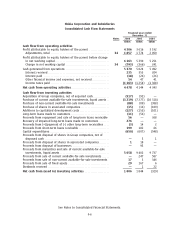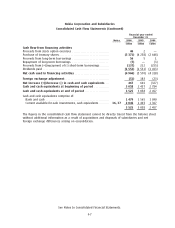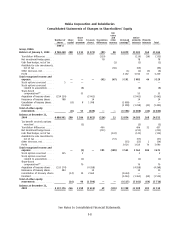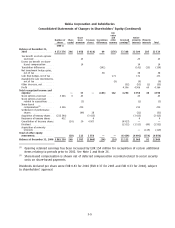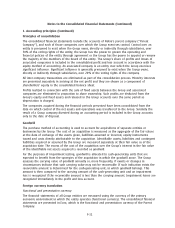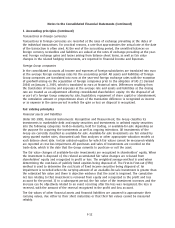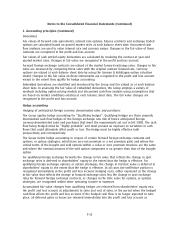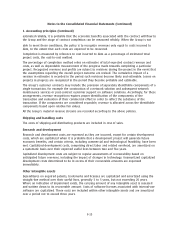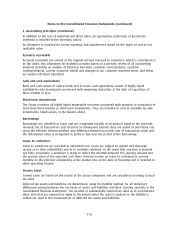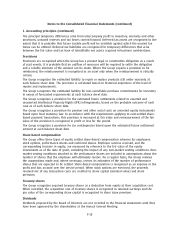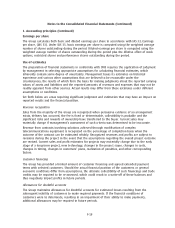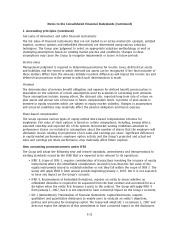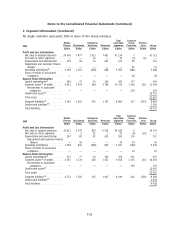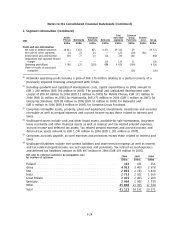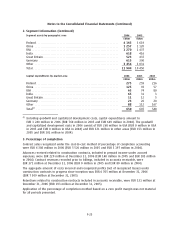Nokia 2006 Annual Report Download - page 151
Download and view the complete annual report
Please find page 151 of the 2006 Nokia annual report below. You can navigate through the pages in the report by either clicking on the pages listed below, or by using the keyword search tool below to find specific information within the annual report.Notes to the Consolidated Financial Statements (Continued)
1. Accounting principles (Continued)
Pensions
The Group companies have various pension schemes in accordance with the local conditions and
practices in the countries in which they operate. The schemes are generally funded through
payments to insurance companies or to trusteeadministered funds as determined by periodic
actuarial calculations.
The Group’s contributions to defined contribution plans and to multiemployer and insured plans are
recognized in the profit and loss account in the period to which the contributions relate.
For defined benefit plans, principally the reserved portion of the Finnish TEL system, pension costs
are assessed using the projected unit credit method: the cost of providing pensions is recognized in
the profit and loss account so as to spread the service cost over the service lives of employees. The
pension obligation is measured as the present value of the estimated future cash outflows using
interest rates on high quality corporate bonds with appropriate maturities. Actuarial gains and losses
outside the corridor are recognized over the average remaining service lives of employees. The
corridor is defined as ten percent of the greater of the value of plan assets or defined benefit
obligation at the beginning of the respective year.
Past service costs are recognized immediately in income, unless the changes to the pension plan are
conditional on the employees remaining in service for a specified period of time (the vesting period).
In this case, the past service costs are amortized on a straightline basis over the vesting period.
Property, plant and equipment
Property, plant and equipment are stated at cost less accumulated depreciation. Depreciation is
recorded on a straightline basis over the expected useful lives of the assets as follows:
Buildings and constructions ************************************ 20 33 years
Production machinery, measuring and test equipment ************ 1 3 years
Other machinery and equipment******************************** 3 10 years
Land and water areas are not depreciated.
Maintenance, repairs and renewals are generally charged to expense during the financial period in
which they are incurred. However, major renovations are capitalized and included in the carrying
amount of the asset when it is probable that future economic benefits in excess of the originally
assessed standard of performance of the existing asset will flow to the Group. Major renovations are
depreciated over the remaining useful life of the related asset. Leasehold improvements are
depreciated over the shorter of the lease term or useful life.
Gains and losses on the disposal of fixed assets are included in operating profit/loss.
Leases
The Group has entered into various operating leases, the payments under which are treated as
rentals and recognized in the profit and loss account on a straightline basis over the lease terms.
Inventories
Inventories are stated at the lower of cost or net realizable value. Cost is determined using standard
cost, which approximates actual cost on a FIFO basis. Net realizable value is the amount that can be
realized from the sale of the inventory in the normal course of business after allowing for the costs
of realization.
F16


